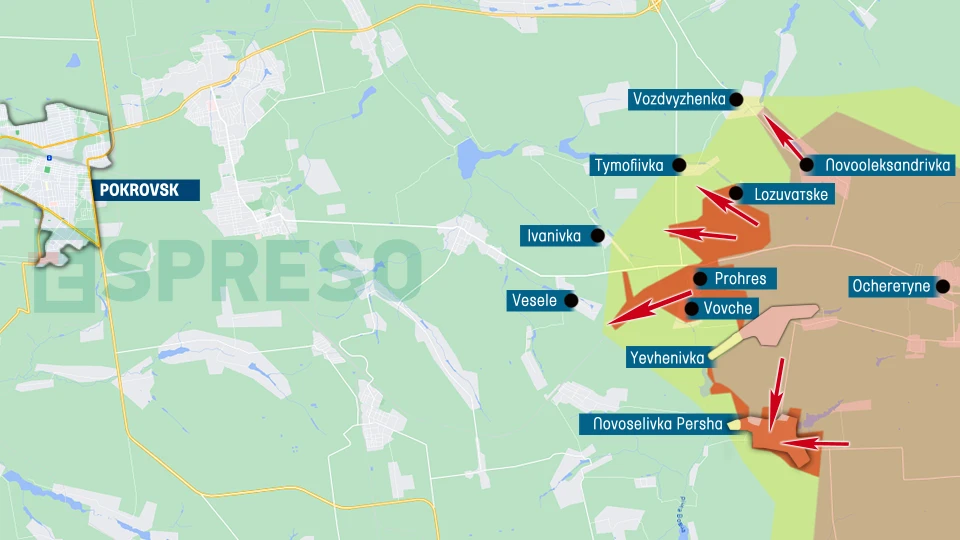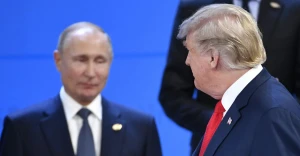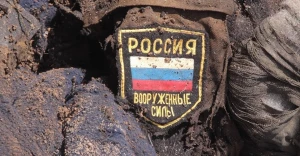
Ukraine frontline situation and how to counter Russian reconnaissance drones. Weekly military review
Ukrainian military expert Serhiy Zgurets has analyzed the strike on the Saky air base in occupied Crimea, the situation on the front line and how to counter Russian reconnaissance drones
Strike on the Saky air base
On the night of July 26, another attack was carried out on the Saky Russian military airport in the temporarily occupied Crimea, probably with ATACMS ballistic missiles. Russia kept at least 16 Su-30 and Su-24 aircraft there. According to preliminary information, an ammunition depot was hit at the airfield.
It is also reported that Russia's air defense position was attacked near the airfield in the village of Shovkovychne. A radar station was allegedly destroyed there, but whether the aircraft themselves were hit will be determined later based on the results of the images that are about to appear. The General Staff confirmed the strikes on the airfield, but also without detailing the results.
Weekly review of events at the frontline
I will focus on the Pokrovsk direction because the situation here is the most difficult and even critical. Over the past 10 days, Russia's advance was within 4 kilometers. Over the past week, the Russian army entered Vovche and Novoselivka Persha, captured Lozuvatske and Prohres. It is worth mentioning here that the fighting for the village of Prohres began in late April, and since then the Ukrainian Armed Forces have been relatively successful in repelling Russia's attacks. When Russia launched another massive assault on July 19, almost the entire village was left by Ukrainian troops.

According to DeepState analysts, the operational and tactical situation became critical because the territorial defense brigade that was defending Prohres had chaotically retreated. The 47th Brigade was sent to stabilize, and it was also unable to fully withstand Russia's pressure, as there was already a concentration of up to two Russian companies in the village, and Russian infantry was able to close the ring between the villages of Prohres and Lozuvatske, which was a cordon around the height where the first and third battalions of the 31st Separate Mechanized Brigade of the Ukrainian Armed Forces were stationed. Despite the threat of encirclement, the brigade commander did not order a breakthrough. I will quote DeepState further: “The personnel who were in the area informed the commander that the troops would break through with the support of artillery and aerial reconnaissance of neighboring units. They were able to get out of the encirclement in full force.”
Amidst this information, I expected that there would be some explanations for the public from the brigade or the Defense Ministry, but there were none. The issue here is not the territories left by the soldiers, but the command's assessment of the situation. When it comes to the risks of encirclement, I think there should be some comments from the spokespersons. There are probably some miscalculations on the part of the command, and Russia has a significant advantage in manpower and equipment, in means of destruction. Here, the situation has not yet changed in Ukraine's favor.
Videos were shot in Prohres where the Russian troops enter in groups of 40-50 people, and Ukrainian artillery is not working at this time. By the way, there was an interesting comment from one of the battalion commanders of the 47th Separate Mechanized Brigade that helped the 31st brigade. The officer said that there were failures in the area and the 47th Brigade was sent to stabilize, which was completely wrong, because they had to do maneuver defense and simply give up Prohres, move to another line and gain a foothold. We had time to do that, the officer said, but because the generals adhered to the principle of “not a step back, we stand to the last soldier,” unfortunately, Ukraine suffered some avoidable losses.
Now, these areas are still being defended by the 31st and 47th Separate Mechanized Brigades of the Ukrainian Armed Forces. They are holding back Russia's advance, although it is not easy for them. Let me remind you that after Prohres was captured, Russia will try to continue to move in two directions from this section. On the one hand, to break through to the Pokrovsk-Kostiantynivka highway, and on the other hand, from Prohres to the railroad, it will move along the northern part of the railroad to another section to Pokrovsk, creating threats to Ukrainian groups.
It is unlikely that the Russian forces will resort to defense in some time, as the National Guard commander predicted the other day. Now Russia is trying to make the most out of holding the initiative on the battlefield. Then the question for Ukrainian commanders is how to balance reserves and capabilities to deter Russia in certain areas, seize the initiative, and in these circumstances, if possible, carry out counteroffensive actions or take measures aimed primarily at destroying Russia's manpower? In any case, we can say that at the current stage, neither Ukraine nor Russia can achieve their strategic goals with the available resources, which shapes the nature of hostilities with an emphasis on depleting each other's military and economic potential.
How to counter Russian reconnaissance drones
Next, we will talk about how to counter the Russian army in those areas, where it seeks to make its advantages systemic. First of all, we are talking about the use of reconnaissance drones that fly deep into Ukraine's territory, then this data is transmitted to Russian weapons, and they strike with Iskanders and other long-range munitions. In particular, after the reconnaissance drone, Russia fired Iskander at the Kharkiv Armored Plant.
Defense Express defense and technology expert Anton Mikhnenko, who works closely with Ukrainian defense companies, believes that Russia's use of reconnaissance UAVs can only be minimized in a comprehensive way.
“The Russian Federation aggressively used what they had. It differs from what they have now and how they use it, and this also applies to the use of drones. If earlier they could use the Orlan in one frequency range, in one mode, now they are using different modes and the nature of the use of these Orlans in the course of hostilities may differ. They are well aware that Ukraine has electronic warfare capabilities, and it is also trying to jam these devices, to use a variety of firepower that can hit drones, not only from the ground, but also from the air,” he emphasized. He recalled examples of an FPV drone hitting a Russian reconnaissance drone.
In this situation, complexity is the key. Firstly, Ukraine needs systems for detecting these drones on the territory of Ukraine, which should operate over a long distance. There are certain tools for this, in particular, from Infazakhyst, a software company, the Pluton complex designed to detect unmanned vehicles. In addition, there are active devices that can also detect radar equipment and drones with a small effective scattering surface. The next point is the means of destruction.
“There is a problematic component here. We have to understand that the military often sees drones, but they do not have the means to reach them, so to speak, to engage them, destroy the drone and suspend the reconnaissance process. This is a challenge that we have to address comprehensively by creating air defense, both with our own means and using the means of our partners. You can see where we have already come, using FPV drones. But this is not a systematic approach, we have to build this system and respond timely,” said Mikhnenko.
According to him, all the means that the Ukrainian Defense Forces are currently using must work in an integrated manner, meaning that each element must complement each other. Technologies are developing very quickly, both for Russia and Ukraine. Therefore, Ukraine has to stay ahead of Russia.
“This is an eternal war between electronic intelligence and electronic warfare, because ELINT needs to find a radio source, and EW needs to suppress it, and vice versa, electronic intelligence needs to monitor the radio source as much as possible in order to get the most information from it. This is an eternal war, let's say, but it can be solved. The key step is a fundamental interaction between units, i.e., units engaged in electronic suppression must interact with electronic intelligence units and firepower units, actively monitor where and what is happening, and act together. This will be important, including for both defensive and offensive operations. For example, to create the conditions for using Ukraine's drones when Russia is working very intensively. This is also a very important task for electronic warfare systems. That is, the first step is to coordinate actions, maximize cooperation with units, and there should be no competition,” the Defense Express defense and technology expert said.
The second stage should be the most intensive development of electronic warfare capabilities.
Mikhnenko explained that electronic warfare means of the operational and strategic level can interfere with Russian devices from lower to higher frequencies. At the same time, at the tactical level, there are many means that will work in any case, because military personnel, units, commanders are worried about their subordinates and set up portable electronic warfare equipment.
“In the current conditions, when there is intensive use of drones by the enemy, because the density and use are very high, this complex electronic situation leaves an imprint on the use of troops. I repeat, the key point is the technological capability of these means and the coordination of all units, from the operational and strategic level to the tactical level,” the expert added.
- News












































